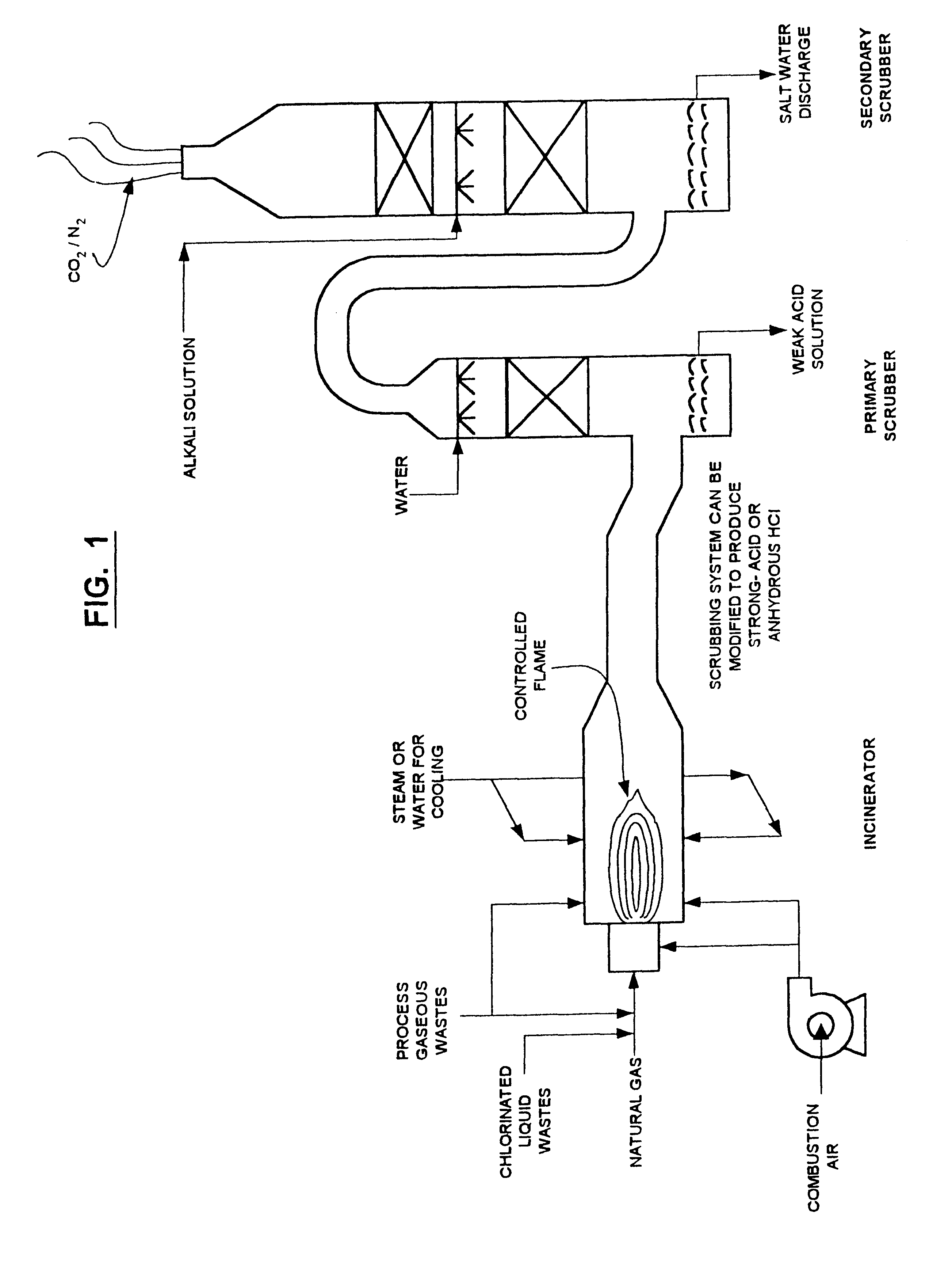Chlorinated hydrocarbon waste incinerator and valorization of chlorinated residuals process unit
a technology of chlorinated hydrocarbon and incinerator, which is applied in the direction of emissions prevention, combustion types, separation processes, etc., can solve the problems of undesirable n.sub.2/co.sub.2 vent stream and inefficient operation
- Summary
- Abstract
- Description
- Claims
- Application Information
AI Technical Summary
Benefits of technology
Problems solved by technology
Method used
Image
Examples
Embodiment Construction
FIG. 1: The typical chlorinated hydrocarbon waste incinerator system is shown. The system is comprised of a central, high-temperature incinerator into which natural gas, chlorinated liquid wastes and process gaseous wastes are injected, along with combustion air. The controlled natural gas flame burns within the incinerator. There is a port adjacent to this flame wherein steam or water can be injected to cool the reaction. A primary scrubber is attached downstream of the incinerator, wherein hydrogen chloride is dissolved in water to produce a weak acid solution. A secondary scrubber containing an alkali solution is attached downstream of the primary scrubber in order to neutralize any HCl or chlorine still contained in the vent gas. The remaining CO.sub.2 / N.sub.2 gas is vented from this secondary scrubber.
FIG. 2: The reaction taking place in a vinyl chloride monomer-acetylene (VCM-A) manufacturing unit is depicted. In this unit, acetylene is reacted with anhydrous HCl to produce v...
PUM
| Property | Measurement | Unit |
|---|---|---|
| concentration | aaaaa | aaaaa |
| pressure | aaaaa | aaaaa |
| weight | aaaaa | aaaaa |
Abstract
Description
Claims
Application Information
 Login to View More
Login to View More - R&D
- Intellectual Property
- Life Sciences
- Materials
- Tech Scout
- Unparalleled Data Quality
- Higher Quality Content
- 60% Fewer Hallucinations
Browse by: Latest US Patents, China's latest patents, Technical Efficacy Thesaurus, Application Domain, Technology Topic, Popular Technical Reports.
© 2025 PatSnap. All rights reserved.Legal|Privacy policy|Modern Slavery Act Transparency Statement|Sitemap|About US| Contact US: help@patsnap.com



